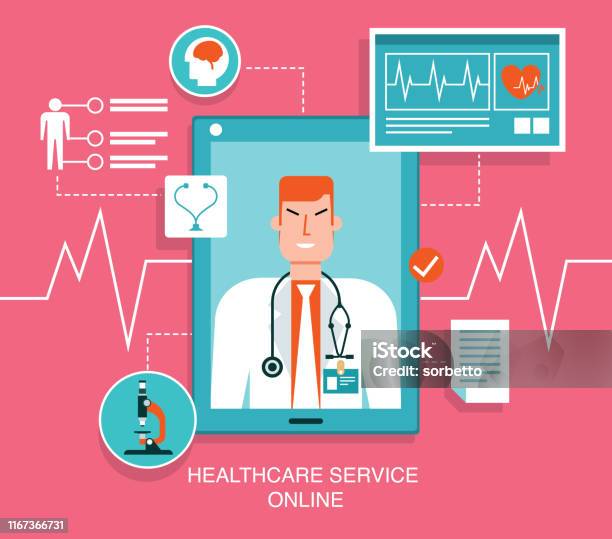Discover the Advantages of Subscription Based Healthcare for Affordable Medical Care
Discover the Advantages of Subscription Based Healthcare for Affordable Medical Care
Blog Article
Exactly How Subscription-Based Medical Care Is Revolutionizing the Clinical Market

The Increase of Subscription Medical Care
Over the last few years, the health care sector has actually witnessed a considerable change towards subscription-based models, showing broader customer patterns preferring convenience and predictability. This makeover is driven by the increasing need for even more obtainable and customized care remedies. Membership medical care, occasionally described as concierge medicine or direct health care, provides individuals a fixed monthly cost for a series of clinical solutions, considerably changing standard fee-for-service versions.
The surge of membership healthcare is helped with by improvements in technology, which allow streamlined interaction between carriers and clients - subscription based healthcare. Digital systems and telehealth services have actually come to be essential, providing clients the capability to set up visits, gain access to clinical documents, and get examinations online. This technological integration not only improves person interaction yet additionally allows companies to provide a lot more reliable treatment
Additionally, the registration model aligns with the developing assumptions of people that seek more control over their medical care expenses and experiences. By getting rid of the unpredictability of co-pays and insurance coverage claims, subscription-based medical care provides a clear and straightforward technique. While this version is acquiring grip, its proliferation deals with obstacles such as regulative difficulties and the need for broader acceptance within the traditional healthcare community. Its expanding presence marks a crucial moment in the advancement of health care shipment.
Benefits for Carriers and people
Subscription-based medical care offers a wide variety of advantages for both companies and individuals, reshaping the characteristics of treatment. For individuals, this design supplies enhanced accessibility to healthcare solutions. With a foreseeable month-to-month charge, individuals can delight in unlimited consultations, minimized delay times, and individualized care. This setup frequently brings about a more proactive strategy to wellness management, enabling prompt treatments that can stop persistent conditions from intensifying. Moreover, the financial openness of membership versions minimizes the unpredictability associated with typical fee-for-service billing, reducing the problem of unexpected clinical expenditures.
For health care suppliers, subscription-based models promote a more gratifying and lasting practice. By protecting a consistent revenue stream, carriers can concentrate on supplying top notch treatment without the stress of volume-based service. This version motivates longer person appointments, promoting stronger patient-provider connections and enhancing wellness results. Additionally, it offers carriers the adaptability to innovate and integrate preventative and alternative care practices. Management jobs are frequently streamlined, reducing overhead prices and enabling suppliers to dedicate more time to client communication. Overall, subscription-based medical care straightens the rewards of service providers and individuals, advertising a much more efficient and patient-centered health care shipment system.
Trick Features of the Model
Often, the vital functions of the subscription-based health care design emphasize its unique technique to providing medical services. Central to this model is the idea of foreseeable, month-to-month payments, offering clients a comprehensive array of services without the unpredictability of traditional fee-for-service frameworks. This design usually includes unrestricted accessibility to medical care solutions, preventive care, and regular check-ups, making certain that individuals can engage with their doctor proactively rather than reactively.
Additionally, direct communication networks, such as telemedicine and messaging platforms, are highlighted, permitting clients to get prompt guidance and assessments without needing in-person appointments. This enhances availability and benefit, particularly for people with flexibility restraints or those residing in remote locations. The design likewise promotes stronger doctor-patient relationships, as doctor are incentivized to concentrate on lasting wellness end results as opposed to temporary check outs.
Moreover, subscription-based medical care commonly incorporates technical innovations, such as digital health and wellness records and health tracking applications, to supply personalized and effective care. Patients profit from collaborated and continuous treatment administration, which is customized to their certain health demands. Ultimately, these attributes jointly produce a patient-centered health care experience, focusing on accessibility, cost transparency, and preventative treatment.

Considerations and challenges
While the subscription-based healthcare design offers various benefits, it click this link is not without its difficulties and factors to consider. One significant obstacle is guaranteeing fair gain access to. Registration versions might inadvertently prefer those with greater socioeconomic condition, possibly widening disparities in medical care accessibility for lower-income individuals who may deal with regular monthly charges. This elevates ethical concerns about inclusivity and equity in medical care shipment.
Another difficulty depends on regulative compliance. Subscription-based healthcare must navigate a complicated web of guidelines that vary by area, including problems around client privacy, information security, and state licensing demands. Guaranteeing compliance without restraining the model's adaptability and innovation can be discouraging for carriers.
Furthermore, there is the threat of overutilization or underutilization of services. Clients paying a fixed fee might overuse solutions, causing boosted functional costs, while others might underutilize as a result of be afraid of burdening the system, possibly disregarding essential care.
Future Prospects and Innovations
The landscape of subscription-based healthcare is poised for transformation via arising innovations and advancing potential customers. As modern technology remains to breakthrough, the assimilation of expert system and equipment discovering presents considerable chances to enhance analysis accuracy and simplify client monitoring. Anticipating analytics can change preventive care by recognizing potential health and wellness threats prior to they manifest, thereby decreasing both expenses and the concern on healthcare systems.
Additionally, telemedicine is set to broaden within registration versions, offering clients increased access to healthcare professionals no matter of geographical restraints. This not just assists in connection of treatment but additionally empowers individuals to involve more proactively in their wellness administration. Furthermore, blockchain innovation supplies potential in securing person data and guaranteeing interoperability throughout systems, cultivating trust and openness.
Collaborations between technology firms and health care service providers are most likely to yield innovative services, improving patient experiences and outcomes. As these prospects materialize, subscription-based medical care has the prospective to redefine how treatment is supplied and accessed.
Conclusion
Subscription-based health care is changing the medical sector by offering a more accessible, predictable, and patient-centered approach to medical solutions. This design improves patient-provider connections, makes certain financial openness, and emphasizes preventative care with unlimited assessments and telemedicine. In spite of challenges such as regulatory hurdles and possible variations in gain access to, the subscription model holds pledge for a more tailored go to this web-site and reliable healthcare experience. As technology breakthroughs, better innovations are likely to attend to existing obstacles and enhance medical care shipment.
Membership health care, sometimes referred to as attendant medicine or direct primary care, offers clients a fixed regular monthly cost for a variety of medical solutions, considerably changing traditional fee-for-service designs.
In addition, the membership version lines up with the progressing assumptions of people who seek even more control over their health care expenditures and experiences. For patients, this version provides enhanced access to health care solutions. Generally, subscription-based health care lines up the motivations of companies and clients, promoting a more effective and patient-centered healthcare shipment system.
In addition, telemedicine is investigate this site set to increase within subscription designs, offering patients enhanced accessibility to healthcare professionals regardless of geographical constraints. - subscription based healthcare
Report this page